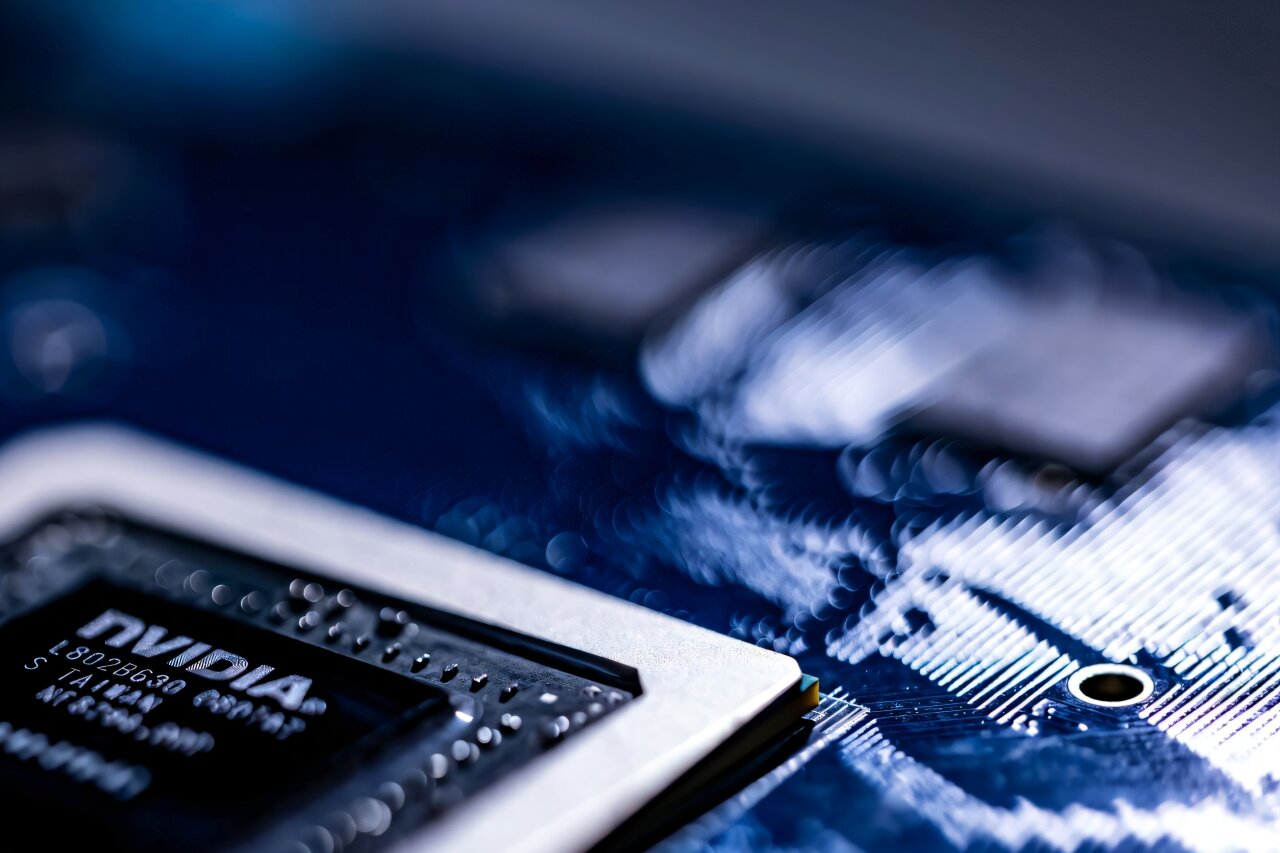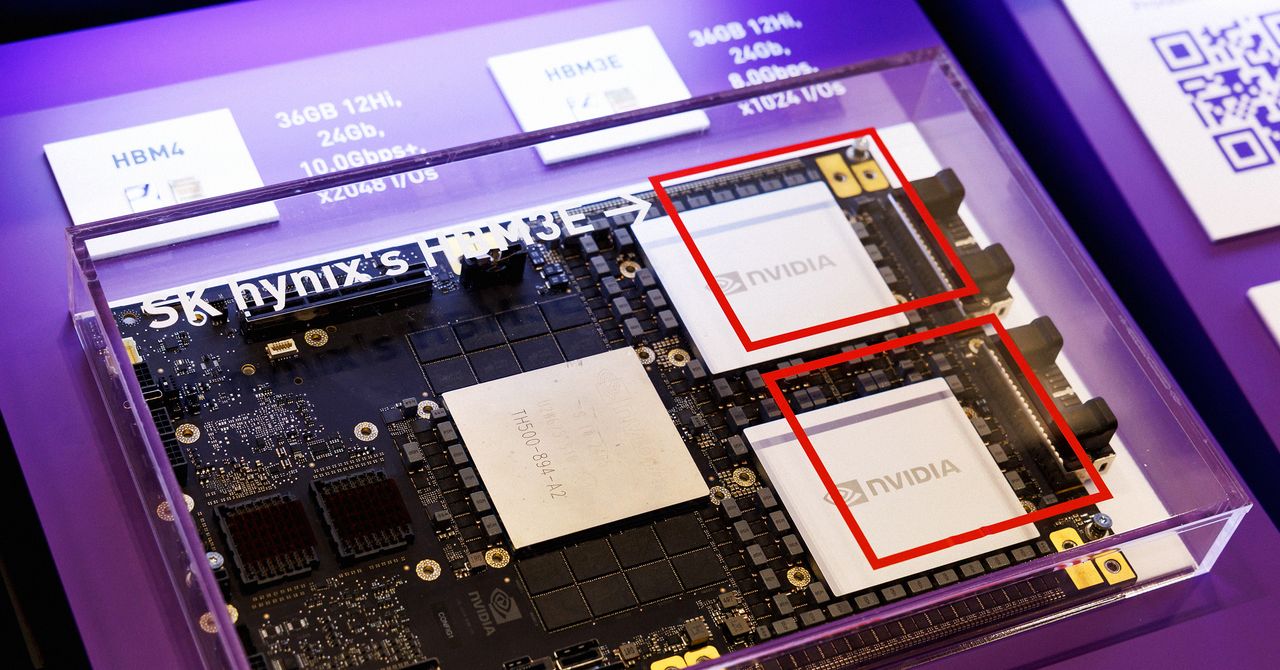Tech
Competition heats up to challenge Nvidia’s AI chip dominance

The artificial intelligence (AI) revolution has whetted the appetites of Nvidia’s competitors, who are seeking to close the gap on the chip giant, which has so far been the central playmaker in the AI revolution.
Virtually unknown to the general public just three years ago, Nvidia now boasts the world’s highest revenues, driven by sales of its graphics cards—or GPUs (graphics processing units)—the processors that are key to building the technology behind ChatGPT and its rivals.
Why does Nvidia dominate?
While it was not the first to develop GPUs, the California-based group made them its specialty starting in the late 1990s, at the very beginning of cloud computing, and thus has unique experience in the field.
Moreover, Nvidia is “a three-headed dragon,” as Dylan Patel, head of consultancy SemiAnalysis, recently put it on the “No Priors” podcast.
It does not just design chips, but offers an entire infrastructure capable of making them work together with networking and software—the dragon’s two other heads.
Nvidia can “satisfy every level of need in the datacenter with world-class product,” according to Jon Peddie of Jon Peddie Research.
Where is the competition?
At a considerable distance from Nvidia, whose market share is estimated at roughly 80% depending on the source, American firm AMD had until now been considered the runner-up.
But AMD generates the bulk of its revenue from CPU sales—processors used for personal and business computers that are less powerful than GPUs—and “can’t divert resources from that golden egg,” Peddie believes.
Determined to reduce their dependence on Nvidia, the major cloud providers have developed their own processors.
Google began using its Tensor Processing Unit (TPU) a decade ago, while Amazon Web Services (AWS)’s Trainium, the cloud-dedicated subsidiary, appeared in 2020.
Today, Google and Amazon account for more than 10% of the market and have even overtaken AMD in terms of “performance, pricing, usability, reliability, and ability to produce enough chips to satisfy the biggest customers,” argued Jordan Nanos of SemiAnalysis.
Google is even offering its chips to third-party customers, according to several media reports. Contacted by AFP, it did not respond. Amazon, however, does not sell its Trainium to other players.
Where do the Chinese stand?
The only nation rivaling the United States in the sector, China is seeking to make up for lost time—and is having to do so without the most advanced US chips, which are now subject to export restrictions.
For Nanos, Huawei ranks among Nvidia’s most credible competitors, alongside Google or Amazon, and ahead of AMD.
Like Google and Amazon, their Chinese equivalents Baidu and Alibaba are also now having their own AI processors manufactured, though these remain merely substitutes for Nvidia’s GPUs.
“They can’t catch up technically for a while using in-country” fabrication facilities, said Peddie.
But “over time, with its huge and smart workforce, and subsidized investment, China will be able to make state-of-the-art fabrication systems.”
Is Nvidia under threat?
No expert sees the Santa Clara, California, giant loosening its grip on the sector in the near future.
“Nvidia underpins the vast majority of AI applications today,” notes John Belton, analyst at Gabelli Funds. “And despite their lead, they keep their foot on the gas by launching a product every year, a pace that will be difficult for competitors to match.”
In early September, Nvidia announced that its new generation, Rubin, would be commercialized in late 2026, with performance for AI functions estimated at 7.5 times that of its flagship product currently on the market, Blackwell.
© 2025 AFP
Citation:
Competition heats up to challenge Nvidia’s AI chip dominance (2025, October 6)
retrieved 6 October 2025
from https://techxplore.com/news/2025-10-competition-nvidia-ai-chip-dominance.html
This document is subject to copyright. Apart from any fair dealing for the purpose of private study or research, no
part may be reproduced without the written permission. The content is provided for information purposes only.
Tech
Hands On With Google’s Nano Banana Pro Image Generator

Corporate AI slop feels inescapable in 2025. From website banner ads to outdoor billboards, images generated by businesses using AI tools surround me. Hell, even the bar down the street posts happy hour flyers with that distinctly hazy, amber glow of some AI graphics.
On Thursday, Google launched Nano Banana Pro, the company’s latest image-generating model. Many of the updates in this release are targeted at corporate adoption, from putting Nano Banana Pro in Google Slides for business presentations to integrating the new model with Google Ads for advertisers globally.
This “Pro” release is an iteration on its Nano Banana model that dropped earlier this year. Nano Banana became a viral sensation after users started posting personalized action figures and other meme-able creations on social media.
Nano Banana Pro builds out the AI tool with a bevy of new abilities, like generating images in 4K resolution. It’s free to try out inside Google’s Gemini app, with paid Google One subscribers getting access to additional generations.
One specific improvement is going to be catnip for corporations in this release: text rendering. From my initial tests generating outputs with text, Nano Banana Pro improves on the wonky lettering and strange misspellings common in many image models, including Google’s past releases.
Google wants the images generated by this new model—text and all—to be more polished and production-ready for business use cases. “Even if you have one letter off it’s very obvious,” says Nicole Brichtova, a product lead for image and video at Google DeepMind. “It’s kind of like having hands with six fingers; it’s the first thing you see.” She says part of the reason Nano Banana Pro is able to generate text more cleanly is the switch to a more powerful underlying model, Gemini 3 Pro.
Tech
Four Indicted In Alleged Conspiracy to Smuggle Supercomputers and Nvidia Chips to China

Stern said text messages obtained by authorities show Li boasting about how his father “had engaged in similar business on behalf of the Chinese Communist Party.” Stern alleged the messages also show Li, who works at a hardware distribution company, was aware through news articles he shared that the Nvidia chips were subject to export controls. “He explained that his father had ways to import them,” Stern said, again citing Li’s text messages.
Stern told the court that Li “did admit to various facts” during questioning by federal agents on Wednesday that implicated him.
The defendants face various charges related to violating export control laws and up to 20 years in prison.
Ho and Raymond did not immediately respond to requests for comment sent to LinkedIn accounts purportedly belonging to them. Public defenders for Chen and Li declined to comment.
Nvidia spokesperson John Rizzo said in a statement that “even small sales of older generation products on the secondary market are subject to strict scrutiny and review” and that “trying to cobble together datacenters from smuggled products is a nonstarter, both technically and economically.”
Corvex, an AI cloud computing business Raymond consulted for, said in a statement that it had rescinded a job offer for him to join the company full-time and that it had no connection to the alleged wrongdoing.
Earlier this year, the US Department of Commerce was reportedly considering restricting the sale of advanced chips to Malaysia and Thailand in an effort to curb chip smuggling, but the regulations have yet to be finalized. The Commerce Department did not immediately respond to a request for comment.
Magistrate Judge Westmore ordered Li to hire an attorney because she said he had significant equity in a San Leandro, California, home and other assets, making him ineligible for a public defender. The magistrate also set a hearing for Tuesday to decide whether Li is a significant flight risk and should continue to be detained. He holds a US green card and Hong Kong citizenship.
Li, wearing glasses, flipflops, and a black windbreaker, nodded in response to some of Westmore’s statements but did not speak. Kaitlyn Fryzek, his temporary public defender, said Li is planning to marry a US citizen. “His incentive is to stay and get married to his fiancée,” Fryzek said.
Tech
Got a Pixel 10? Google’s Android Phone Can Now Share Files With Apple’s AirDrop
The caveat is that the iPhone user will need to switch AirDrop into the “Everyone for 10 Minutes” mode instead of “Contacts Only” mode. Google says this isn’t some kind of workaround solution. It’s a direct, peer-to-peer connection; your data isn’t routed through a server, shared content isn’t logged, and no extra data is shared. Naturally, iPhone owners will be able to send data back to Pixel 10 phones as well.
Google has not worked with Apple on this cross-compatibility, as the company says it “welcomes the opportunity” to work with Apple so that this sharing function can work in the Contacts Only mode. “We accomplished this through our own implementation,” a Google spokesperson tells WIRED. “Our goal is to provide an easy and secure file-sharing experience for our users, regardless of who they are communicating with.”
In a security blog post, Google says the underlying strategy for what makes this new synergy between Quick Share and AirDrop work is the memory-safe Rust programming language. “These overlapping protections on both platforms work in concert with the secure connection to provide comprehensive safety for your data when you share or receive,” writes Dave Kleidermacher, vice president of Google’s platforms security and privacy.
Google tapped NetSPI, a third-party and independent penetration testing firm, to validate the security of the new sharing feature. The findings? The interoperability is “notably stronger” than other industry implementations. That’s pretty important, considering what happened the last time someone tried to improve cross-compatibility between iOS and Android without Apple: The startup Beeper tried to make texts from Android phones show up as blue bubbles on iPhones and caused all kinds of drama.
The number of people who can actually use this feature is limited because it’s only available on Google’s latest Pixel 10 smartphones, which just launched this past August. However, Google says it’s looking to expand the feature to more Android devices in the future.
This new feature in Quick Share is rolling out starting today to the Pixel 10 series, which includes the Google Pixel 10, Pixel 10 Pro, Pixel 10 Pro XL, and Pixel 10 Pro Fold. As it’s rolling out, you may not see it immediately on your device. To use it, all you need to do is select something to share, whether it’s a file, contact, or photo, choose Quick Share in the sharing menu, and make sure the iPhone owner has their AirDrop set to “Everyone for 10 Minutes Only.” The iPhone will be able to see the Pixel 10 device and can receive or send data.
-

 Tech6 days ago
Tech6 days agoNew carbon capture method uses water and pressure to remove CO₂ from emissions at half current costs
-

 Politics1 week ago
Politics1 week agoBritish-Pakistani honoured for transforming UK halal meat industry
-

 Business6 days ago
Business6 days agoThese 9 Common Money Mistakes Are Eating Your Income
-

 Sports5 days ago
Sports5 days agoTexas A&M officer scolds South Carolina wide receiver after touchdown; department speaks out
-

 Business6 days ago
Business6 days agoWhat’s behind Rachel Reeves’s hokey cokey on income tax rises?
-

 Sports6 days ago
Sports6 days agoApple scrapping MLS Season Pass service in ’26
-

 Fashion7 days ago
Fashion7 days agoAfter London, Leeds and Newcastle, next stop Glasgow for busy Omnes
-

 Tech7 days ago
Tech7 days ago$25 Off Exclusive Blue Apron Coupon for November 2025


















